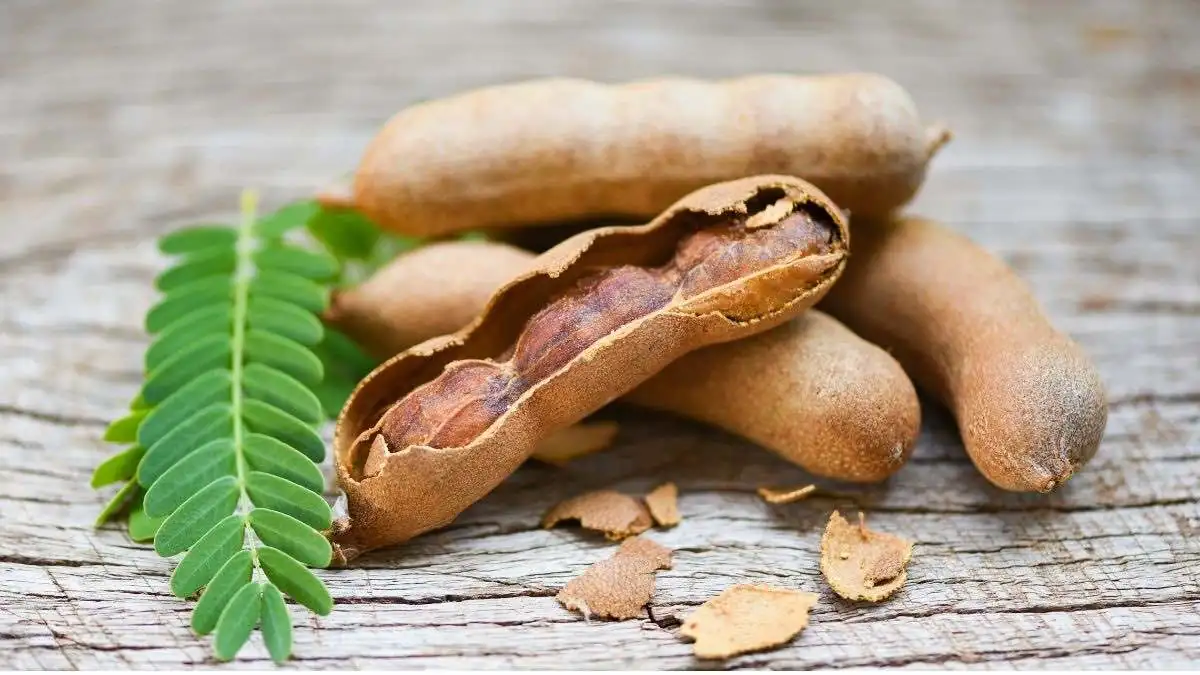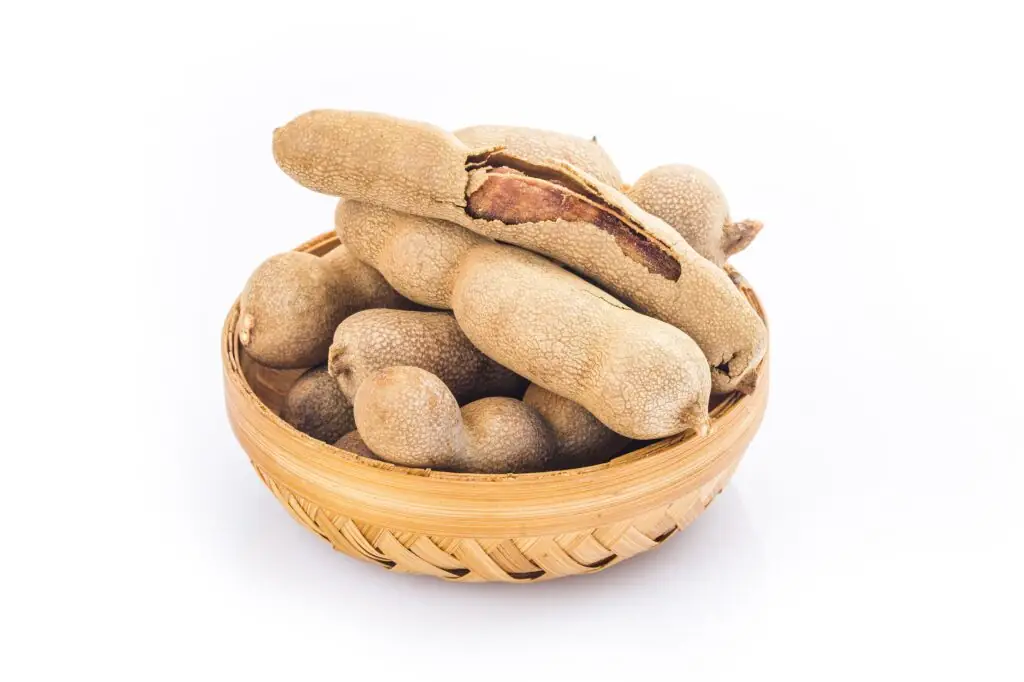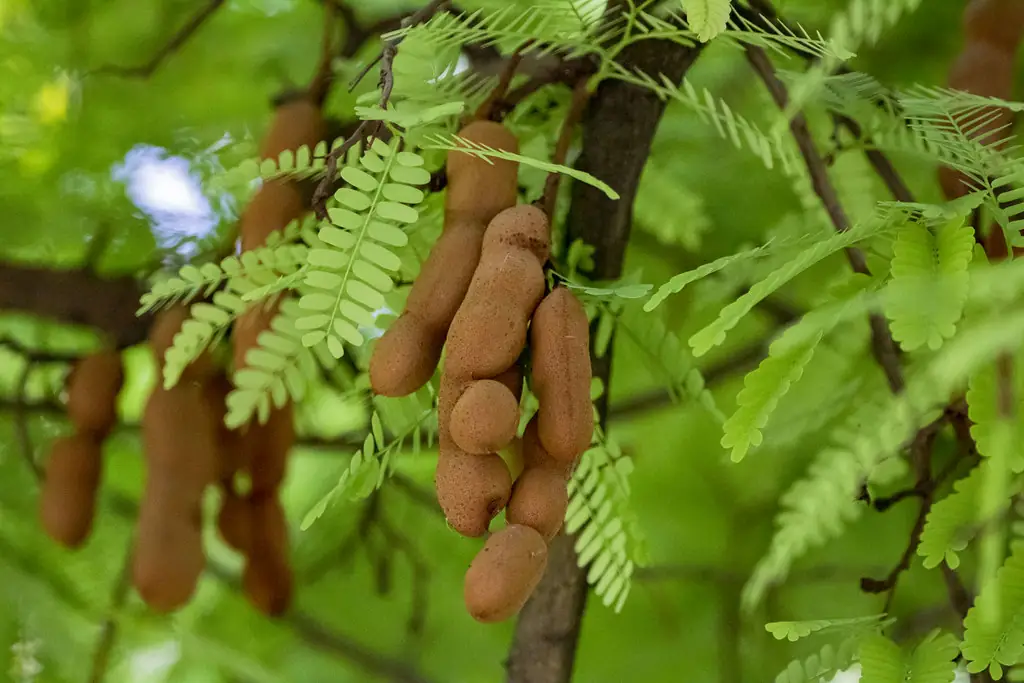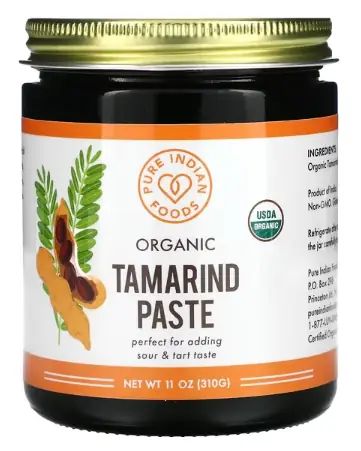What Are the Health Benefits of Tamarinds: A Review

Sweet and tangy, tamarinds make an excellent dessert. What are the health benefits of tamarinds? What vitamins are these pods rich in? Can you use them to make tea? Are tamarind leaves edible?
Read on to find the answers to all these and numerous other questions.
What Health Benefits Does Tamarind Have?
Loaded with sugars and vitamins, tamarinds have both their pros and cons.
Vitamins
Tamarins are extremely rich in vitamin B1 (29% Daily Value or DV per 100 grams) and are a good source of vitamins B2 (9% DV) and B3 (10%). All these B vitamins are essential for the nervous system; they are also important cofactors for numerous biochemical reactions in the body.
While tamarins also contain other vitamins (like vitamin C, vitamin K, vitamin A, folate, and vitamins B6 and B6), their actual quantities are small. Such vitamin-rich foods as avocados, kale, and broccoli can help you maximize your intake of vitamins: be sure to include them in your daily diet.

Dietary Minerals
Tamarinds are also rich in such dietary minerals as:
- magnesium (23% DV, present in every living cell and required for a huge number of biochemical reactions)
- iron (16% DV, which makes it possible for red blood cells to carry oxygen from the lungs to the cells)
- potassium (18% DV, required for nerve transmission and blood pressure normalization)
- phosphorus (11% DV, an essential component of cellular membranes and indispensable for the health of bones and teeth)
- calcium (required for muscles and bones as well as for the digestive and circulatory systems).
Tamarinds also contain small quantities of zinc, copper, and selenium. They are extremely low in sodium: it is an established fact that excessive sodium consumption can lead to elevated blood pressure and even blood failure.
Dietary Fiber
One of the most important health benefits of sweet ripe tamarind fruit is that it is rich in dietary fiber. Fruit and vegetables that contain large quantities of dietary fiber:
- promote intestinal health by providing food for good bacteria that live in the gut
- help you feel full for a longer time as dietary fiber cannot be broken down by the digestive system
- make your stool both heavier and bulkier, which helps prevent constipation

Sugar
The only drawback tamarinds have is that they are extremely rich in sugars. In fact, sugars make up more than 57% of the weight of pods.
Sugars are the main source of the so-called fast calories. If you do not spend them quickly (e.g., by lifting heavy weights or doing hard work), they will be turned into fat which can potentially lead to obesity.
What’s more, excessive consumption of sugars was linked to the development of insulin resistance in susceptible individuals. Thus, although tamarinds make an excellent natural dessert, it will not be very good for your general health to overindulge in them.
Last but not least, if you suffer from diabetes and have to limit your daily intake of sugar, you need to consult your doctor to find out how many tamarinds you are allowed to eat a day.
Polyphenols
Tamarinds are also known to contain polyphenols: complex organic compounds that have antioxidant properties.
High polyphenolic content allows some scientists to hypothesize that tamarinds can have additional health benefits like lowering cholesterol. Still, although there are some promising preliminary studies on hamsters, additional wide-scale research on humans is required.

FAQ
In this section you will find the answers to the most common questions about tamarinds.
Can Tamarind Reduce Belly Fat?
This fruit is extremely rich in sugars; every time you eat it, you get huge quantities of empty calories, which are one of the leading causes of obesity. So, the answer is no: tamarinds cannot be used for losing weight. On the contrary, these extremely sweet pods can help you quickly gain fat.
What Are the Health Benefits of Tamarind Leaves?
Subtly tart and tangy leaves of tamarinds are an excellent source of vitamins A and C and such dietary minerals as iron, potassium, and calcium. They can be cooked in a number of ways: blanched and added to salads, ground into a paste and used for curries and stews, or dried for storage and then soaked in water to be added to delicious soups. Unlike the pods of the tree, the leaves do not contain excessive amounts of sugar.
What Are the Health Benefits of Tamarind Paste?
This deliciously sour tart paste is made from unripe pods of tamarind trees. On the plus side, this product features absolutely no quick calories and makes an excellent condiment for your curries, marinades, and noodle dishes. On the minus side, it doesn’t offer any measurable quantities of vitamins and dietary minerals. Then again, if you would like to try some new flavors, tamarind paste is definitely worth giving a try.
Tamarind Paste by Pure Indian Foods

- 310 g (11 oz)
- Certified organic
What Are the Health Benefits of Tamarind Seeds?
Tamarind seeds have been used in folk Indian medicine for millennia. They are believed to be a remedy for diarrhea and indigestion, treat teeth infections, improve symptoms of diabetes, heal bone fractures, and even have benefits for sore eyes. Although some of these claims (like the reduction of arthritis-related inflammation) are confirmed by small-scale studies, additional research into the properties of the seeds is still required.
Cooking these seeds, however, can be a challenging task. You need to roast them until they turn charcoal-black: after this the seeds can be peeled. The kernels you get can be:
- eaten as they are, although they remain hard to bite and need to be kept in the mouth for some time;
- soaked in buttermilk or water for several days. You will need to change the water every day;
- boiled or fried until they are soft;
- ground and used instead of coffee.
There are also dietary supplements that feature extract of tamarind seeds and are meant to help sore joints:
Joint Mobility by Life Extension

- 60 capsules
- Each capsule contains 200 mg of a mixture of tamarind seed and turmeric extracts.
- Reliable brand
What Are the Health Benefits of Tamarind Tea?
Although there are numerous black, green, and fruit teas with added tamarind flavor, real tamarind tea is brewed using tamarind pods themselves. Here is what you need to do:
- Open dried pods (you will need 15 of them) and remove the strings and the shell
- Bring clean water (4 cups) to a boil: after it starts to bubble, add the pods to the water.
- Let your tea steep for 90 minutes or so
- Strain the tea into a blender: there should be no seeds in it, only sweet pulp
- Blend your tea until it is smooth
- Additionally, dilute your tea by adding 4 more cups of clean water
- Put the beverage into the refrigerator. Serve it cold, preferably on ice.
- You can sweeten your tea using regular sugar, or if you want to limit your caloric intake, sweeteners like stevia.
Tamarind tea is believed to be rich in antioxidants and dietary minerals. It is an excellent drink to enjoy in hot weather.
What Are the Health Benefits of Tamarind Juice?
Tamarind juice is very similar in its preparation to the above-described tea. All you need is the following:
- Open the pods and place their seedy pulp into a deep bowl
- Pour in hot water and wait about 10 minutes to let the flesh loosen up
- Add some cold water so that the mixture is cold enough for you to remove the seeds
- Gently squeeze the pulp to separate it from the seeds
- Strain the juice into a pitcher and cool it down.
Just like tamarind tea, this juice is believed to contain vast quantities of antioxidants. To improve its taste, you can mix it with lime, cloves, ginger, and/or cinnamon.
Are Tamarinds Really Good for You?
While these sweet pods are very rich in three B vitamins (B1, B2, and B3) and such important dietary minerals as magnesium and iron, their extremely high sugar content means that you should not overindulge in this fruit. So, is tamarind healthy? It definitely is: if you want something sweet, tamarinds will be a much better choice compared to most candy bars. Still, try not to eat too many tamarinds at once, as it will cause a spike in your blood glucose levels and overload you with a huge number of empty calories. Now you know what are the health benefits of tamarinds. They will be an excellent addition to your diet if you consume these sweet pods responsively and do not neglect to exercise regularly to burn off extra calories.